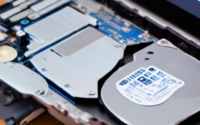Using Drones for Disaster Assessment and Relief
Using Drones for Disaster Assessment and Relief
Introduction:
In recent years, drones have proved to be a valuable tool in disaster assessment and relief efforts. These unmanned aerial vehicles (UAVs) can access hard-to-reach areas, gather real-time data, and provide vital support to aid workers. This article explores the various applications of drones in disaster situations and how they are improving response times and overall effectiveness.
Assessment Phase:
During the initial assessment phase after a disaster strikes, drones play a crucial role in gathering vital information. Equipped with high-resolution cameras, thermal sensors, and other advanced imaging technologies, drones can capture aerial footage and imagery of affected areas. This helps emergency responders and relief agencies to quickly assess the extent of damage, identify potential hazards, and prioritize their response efforts.
Additionally, drones can fly over areas that may be inaccessible to ground teams due to safety concerns or geographical barriers. This capability allows for a more comprehensive and accurate assessment of the disaster’s impact and ensures that no critical information is missed.
Rapid Mapping and Surveying:
One of the key advantages of using drones in disaster situations is their ability to rapidly map and survey affected areas. Drones equipped with advanced GPS technology and high-resolution cameras can capture real-time aerial data, which can be processed to create high-resolution 2D and 3D maps. These maps provide aid workers with valuable insights into the terrain, infrastructure damage, and areas that require immediate attention.
Furthermore, drones can rapidly survey large areas, reducing the time and manpower required for manual surveying. This efficiency allows aid organizations to allocate resources more effectively and streamline their relief efforts.
Search and Rescue Operations:
Drones have proven to be invaluable in search and rescue operations during disaster situations. Equipped with thermal cameras and infrared sensors, these UAVs can detect the heat signatures of survivors, even in low light or obscured environments. This capability allows rescue teams to locate and prioritize their efforts in areas where people may be trapped or stranded.
Moreover, drones equipped with loudspeakers and communication devices can transmit messages and provide instructions to survivors, creating a vital link between isolated individuals and rescue teams. This real-time communication can save lives and expedite rescue operations.
Damage Assessment and Infrastructure Inspection:
Drones provide a cost-effective and efficient solution for assessing damage and inspecting critical infrastructure in disaster-affected areas. Traditional methods of inspection involve sending human inspectors to hazardous sites, which can be time-consuming, risky, and expensive.
By utilizing drones, inspectors can remotely assess the integrity of buildings, bridges, and infrastructure without endangering their lives. Drones equipped with high-definition cameras and thermal imaging sensors can identify structural damage and potential hazards, providing crucial information for engineers and decision-makers.
Furthermore, advanced drone technologies, such as LiDAR (Light Detection and Ranging), can generate detailed 3D models of damaged structures, enabling engineers to assess the severity of the damage and plan appropriate repair strategies.
Delivery of Essential Supplies:
During disaster response, the timely delivery of essential supplies can save lives and help affected communities recover more quickly. Drones offer a unique advantage in delivering aid to remote or inaccessible areas.
Equipped with payload capabilities, drones can transport medical supplies, food, water, and other essential items to disaster-stricken regions. This bypasses infrastructure damage and logistical challenges, ensuring critical supplies reach those in need in a timely manner.
Additionally, drones can facilitate the establishment of temporary communication networks by delivering and deploying communication equipment such as Wi-Fi hotspots or cell phone signal boosters.
Challenges and Future Possibilities:
While drones have proven to be a valuable asset in disaster assessment and relief, there are still challenges that need to be addressed. One of the major concerns is regulatory restrictions and airspace limitations. Governments and aviation authorities are constantly working on developing regulations and policies to integrate drones safely into disaster response operations.
Another challenge is the need for skilled operators and training programs to ensure the effective use of drones in disaster situations. Adequate training is essential to maximize the potential of drones and ensure they are used safely and ethically.
Looking ahead, the future possibilities for drone technology in disaster assessment and relief are promising. Advancements in artificial intelligence, autonomous flight, and sensor technologies will enable drones to operate even more efficiently and independently in challenging environments, further enhancing their effectiveness in saving lives and providing critical support during times of crisis.

